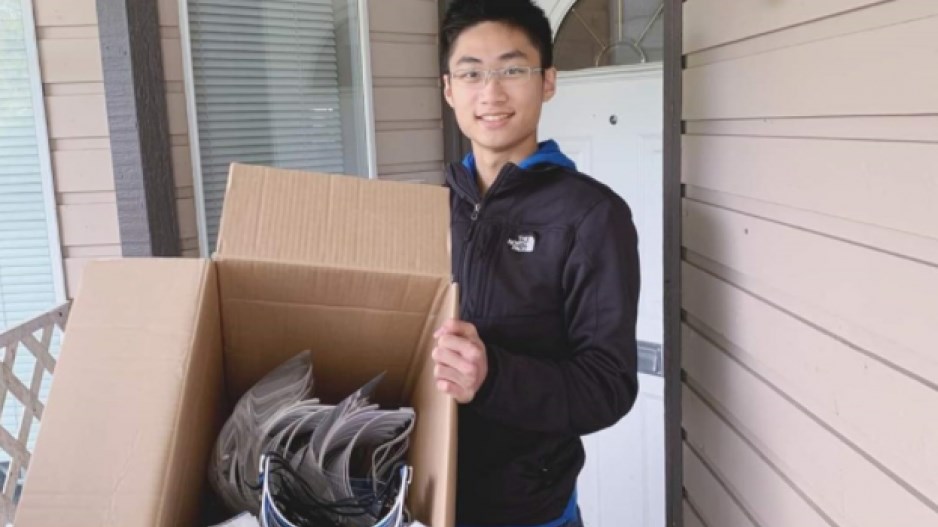One in a series of four stories from British Columbian communities reflecting on how they dealt locally with the pandemic in 2020.
2020 has been anything but auspicious, but it certainly will be memorable.
The year started fine. Actually, for us at the Richmond News, it was particularly encouraging, as we saw a significant jump in our online traffic. But by month’s end, it was clear that something was amiss.
Thanks to Richmond’s demographic and large number of Chinese immigrants, the spectre of a coming pandemic loomed large well before the World Health Organization had even used the “P” word, still calling it an epidemic.
While other communities were going about their business, one of the biggest cultural events of the community was all but shut down.
Traditionally, Chinese New Year in Richmond is a huge deal, with Aberdeen Centre hosting a star-studded countdown event, restaurants operating at full capacity and temples packed with spiritual observers lighting incense and paying their respects. Not this year.
On Jan. 28, Richmond News staff looked outside from our balcony on Ackroyd Road to see a large crowd forming in front of a pharmacy to buy face masks, foreshadowing a scramble for all manner of personal protective equipment (PPE), then toilet paper and other household supplies as the fear of a full lockdown spread.
On Jan. 30, the first COVID-19 case was confirmed in B.C.
Within weeks, malls were turning into ghost towns and the streets were ominously quiet.
And then the first death in B.C. – on the North Shore – was announced March 9.
On March 12, Prime Minister Trudeau called for all non-essential travel to be halted, and ticketholders were left scrambling to cancel flights and get their money back.
The airport had tumbleweeds blowing through it as 90% of travel stopped.
When kids went on spring break, little did they know they wouldn’t see their teachers, classmates or schools until September.
On March 17, the education minister announced schools would shut down to almost all in-person instruction, prompting some creative thinking on the part of the Richmond School District.
Teachers learned to webcast classes, parents became de facto tutors as Richmond hunkered down to physically distance and stop the spread of COVID-19.
On March 19, the City of Richmond followed suit, and council declared a state of emergency and city hall was closed to the public and staff started working from home – like many other businesses and organizations had started to do – and council meetings started resembling Hollywood Squares.
No one has definitively said it – at least from the scientific community – but the large Asian population in Richmond might have played a part in low infections rates here. There were a lot of early adapters to mask-wearing, and, in fact, by mid-March, there were only three known cases of COVID-19 in the city.
By March 19, this number was only eight.
But when COVID-19 hit, it hit the community hard.
Warlito Valdez, 47, who worked at Richmond Society of Community Living, died suddenly from complications of COVID-19 in his home.
This set off an outpouring of grief as he left behind a wife and young daughter, but it also inspired people to follow Dr. Bonnie Henry’s words: “Be kind.”
Richmondite Pamela Sheaves was able to get Valdez’ old T-shirts and set about making a quilt out of them for his family.
This is just one small example of how Richmond residents are trying to make the best of a very difficult time in history.
At the News, we have dubbed this phenomenon “Angels Among Us,” highlighting stories of Richmondites helping others.
There was the anonymous donor who gave a $500 Starbucks gift card for use by the medical staff at Richmond Hospital.
There was the Burnett student, Sean Uy, who made face shields and sent them to hospitals around Canada and the U.S. before many were available – getting a personal thank-you letter from New York Governor Andrew Cuomo.
And then there were the five- and seven-year-old brothers, Jack and Sam Dinter, who made 71 paper hearts with words of inspiration to deliver to the residents of Lions Manor on World Kindness Day on Nov. 13.
A Facebook group called Richmond Coming Together drew on resources in the community to fill in gaps, for example, helping at the food bank where need has grown during the pandemic.
And none of us will forget the 7 p.m. cheer for healthcare workers.
There are many such stories from Richmond where locals embraced the words of Dr. Bonnie Henry.
The fall in Richmond has been one of sifting through information about outbreaks at healthcare facilities and public places and possible exposures at schools.
Data on COVID-19 shows that Richmond remains relatively low in infection rates, with 10-20 people testing positive per week.
The year ends on a note of hope – not necessarily the end of the pandemic, but maybe the beginning of the end.
The first person in Richmond to receive a COVID-19 vaccine was Jodie Jackman, a recreation assistant at a long-term care facility. She was vaccinated on Dec. 22, just days before Christmas and a week before we turn the corner to what we hope will be a better year.




